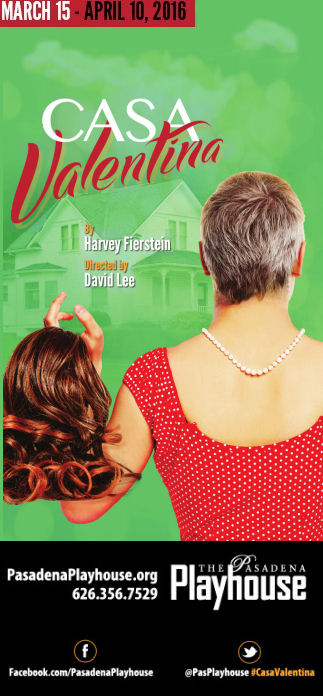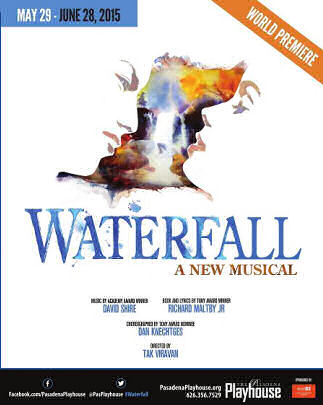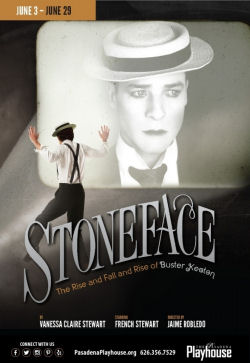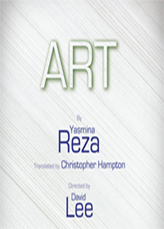
 In the last two years, we’ve seen remarkable strides in the acceptance arena. We’ve seen homosexuals get the right to be married; we’ve been able to observe the transformation of Wheaties Box Heroes from one gender to the other. We’ve seen acceptance of a wide range of sexual preference in society, from no preference at all (asexual) to traditional preference to non-traditional preferences. We’ve seen similar understanding (perhaps not full acceptance yet) of the full range of gender identities. But this hasn’t been comfortable for many; arguably, many wish for those simpler days when the roles and nature of the sexes were much more separate, and those roles and orientations that went against “what nature intended” were best hidden from sight.
In the last two years, we’ve seen remarkable strides in the acceptance arena. We’ve seen homosexuals get the right to be married; we’ve been able to observe the transformation of Wheaties Box Heroes from one gender to the other. We’ve seen acceptance of a wide range of sexual preference in society, from no preference at all (asexual) to traditional preference to non-traditional preferences. We’ve seen similar understanding (perhaps not full acceptance yet) of the full range of gender identities. But this hasn’t been comfortable for many; arguably, many wish for those simpler days when the roles and nature of the sexes were much more separate, and those roles and orientations that went against “what nature intended” were best hidden from sight.
The play Casa Valentina by Harvey Fierstein (FB), officially opening tonight for a run through April 10, 2016 at the Pasadena Playhouse (FB) (which we saw last night) explores those days. It is based upon the true story of Casa Susana, a resort that existed in the Catskill Mountains of New York in the 1950s and early 1960s. The resort catered to men who wanted to release the girl within; in other words, it provided heterosexual men a place where they could endulge their desire to dress as women. This is an era when homosexuality was firmly in the closet, and any inkling of transvestism except as humor tended to be an offense that could land you in jail. The genders, for the most part, were clearly distinct (and God meant them to be that way).
In the play, George (Valentina) and his wife Rita are the proprietors of Chevalier d’Eon, a resort in the Catskills catering to men who like to dress as women. We meet them when a first-timer, Jonathan, arrives for the weekend. He is greeted by Rita and Bessie (Albert), a large friendly girl. Both welcome him, and Bessie helps him get over his fear of transformation into his alter ego, Miranda. We shortly learn that this is a weekend when most of the regulars are present, because there is another special first time guest: Charlotte (Isadore). George arrives home, and during his transformation into Valentina provides more information. Charlotte is from California and is the publisher of a transvestite magazine for which Valentina regularly writes articles. Charlotte has an announcement that could be the savior of George, Rita, and the resort. George also discusses with Rita the reason he arrived late: he was being questioned by the postal inspectors about an envelope of pictures of naked cross-dressing men that had been addressed to him. This worries Rita, and she asks him to discuss it with another of that weekend’s guests, Amy (The Judge).
Soon the other guests have arrived — Gloria (Michael) and Theodore (Terry) — and it is time for the announcement. Their informal sorority was going legit. Charlotte had incorporated it as a non-profit in California, and he just needed their legal (birth names) on a form to sign as officers. Discussion of the risks of this uncover that they are signing a second statement: that they are not homosexuals. It turns out that Charlotte is a strong advocate for transvestites and wants them to be accepted in society. To do this, he believes, they must disassociate themselves from the homosexual cross-dressers. He says something to the effect of: in 50 years, society will broadly accept the cross-dresser, while homosexuals will still be on the outside. Quite a telling line. This requirement — to disavow homosexuals — essentially splits the group. I won’t go into the dynamics from there as it would spoil the story.
This notion — of hetrosexual transvestites — provides some of the most interesting discussions and characters of the story. Much of this centers around Rita, the wife of Valentina and the only GG (genuine girl) on stage for much of the show. What is her relationship to George? What is the relationships of the other characters with their wives? Through exploration of those questions, we begin to see the nature of transvestite relationship: the distinction between the relationship between the man and “the girl within” and their spouses.
All of this is told — as would be expected from Firestein — through loads of extremely humorous lines. This is a very funny play, as humor often comes from great pain. I should note the humor is not from the cross-dressing (as those who recall Milton Bearle or Flip Wilson might recall), but from commentary on life itself.
As I left the play, I had quite a few observations and “compare and contrasts” going through my head. The first was with the musical Dogfight, which we had seen earlier this year. In the first half of Dogfight, the notion of Marines competing to find the ugliest woman, and possibly bed her against her will, just grated against today’s mores against non-consensual sex and how we treat women. Similarly, the notions expressed in Casa Valentina against cross-dressing and homosexuality grate against where society is today: where gays are accepted, and transgender has come out of the closet into something closer to a cultural norm.
The second comparison, which was related to the first, was seeing Casa Valentina in a triangle with two other shows: Feirstein’s Kinky Boots and the reality show RuPaul’s Drag Race. Unlike what was hypothesized in the play, homosexuality has not remained on the outside. In much of the country, homosexuals are completely accepted. It is out in the open and dramatized on commercial TV. As for transvestites: although some still hold the view that many are gay, the efforts of the transgender movement has brought out into the open that some see themselves as female: women trapped in a male body. But this play doesn’t concern either of those: it deals with men with a clear male gender identity and clear heterosexuality just wanting to dress as women. In society today, there’s only one way such men are accepted: as drag queens. Does society accept men who just cross-dress and pass? Have we reached the To Wan Foo, Thanks For Everything, Julie Newmar level? I’m not sure were there yet. Places like Casa Valentina no longer need to exist… or do they?
A final observation has to do with the ending, which is somewhat sudden and on an odd note. The play ends with a discussion between Rita and George about the nature of their relationship, and how it might differ from the relationship between George and Valentina. Rita knows she is George’s wife, but what is she to Valentina. The answer disturbs her, and we end the show with Rita slumped at the table, head in her hands. It raises the question about how all this looks from the wives of such men: there is acceptance, but what is the relationship. Could be an interesting character study.
Overall, what is the impact of the story of Casa Valentina? On the surface, this is a very funny show. It is possible that the surface level is all that was meant. But I think the show has a deeper takeaway: it makes a statement about how society has grown and changes, and how what we predict might be the direction of grown might be very different from what actually happens. It demonstrates the power that fear of discovery can have, and makes us realize that we still have a ways to go for full acceptance. Lastly, it raises wonderful questions about the nature of our relationships: our relationship to the facets of our personality, as well as our relationships to our spouses and our friends.
Director David Lee leads the actors to a very natural performance. He lets the actors draw the humor from the words, and doesn’t draw humor from the costumes. This leads to a very easygoing and humorous show. He has also worked to design the show around a gigantic house as opposed to a flat stage. I believe this amplifies the closeness of the quarters and the closeness of the men. It is a different way of staging the show from the pictures I have seen of other productions.
The actors themselves are excellent. I think the most interesting was Valerie Mahaffey (FB)’s Rita. There was some hidden depth to her character that came off through her performance that was fascinating. Just seeing her in relationship with the men and their girl alter-egos was fascinating. She was part wife, part sister, part confidant, part girl friend. A multilevel complex character, well portrayed.
I also enjoyed the performance of Raymond McAnally (FB; FB Actor Page) as Albert/Bessie. When compared to the other actors, I think he inhabited his girl most completely. There was no sense that there was a man under the frock: this was a loving, open girl who was having fun and just being herself. This was a very open portrayal that made the character very accessible to the audience.
Christian Clemenson‘s Charlotte/Isadore perhaps did the best “crossing”: her portrayal of Charlotte was seamlessly female, and was a fascinating character to watch in her portrayal and her passion.
As for the other “girls” in the cast — James Snyder (FB)’s Jonathan/Miranda, Robert Mammana (FB)’s George/Valentina, Mark Jude Sullivan (FB)’s Michael/Gloria, Lawrence Pressman (FB)’s Theodore/Terry, and John Vickery (FB)’s The Judge/Amy — I’m trying to think if there are any portrayals that stick out in my mind… and there aren’t. They generally came across as men dressing as women and playing their characters. They were good, but none had that special something that transcended the line between the man and the girl.
Rounding out the cast was Nike Doukas as Eleanor, the Judge’s daughter, who only appeared in one scene. The understudies are Matthew Magnusson (FB) (Michael/Gloria, Jonathan/Miranda), Mark Capri (FB) (The Judge/Amy, Theodore/Terry, Albert/Bessie), and Sean Smith (FB) (George/Valentina, Charlotte/Isadore).
Turning to the production and creative team: The small amount of choreography in the show was provided by Mark Esposito; what was there worked well. The scenic design by Tom Buderwitz was mentioned previously: a gigantic house on a turntable that rotated to bring to the fore various rooms and locations. It worked well, but it was interesting following the actors through the rooms. The costumes (by Kate Bergh (FB)) and wigs (by Rick Geyer) were a key to this show: they worked well on their characters and did an excellent job of creating the illusion of femininity (or at least men dressing as women). The lighting was by Jared A. Sayeg (FB) and was up to his usual excellent standards. The sound design was by Philip G. Allen and consisted primarily of sound effects and recorded music, which worked well. Remaining technical and production credits: Mike Mahaffey (FB) — Fight Choreographer; Jeff Greenberg Casting — Casting; Jill Gold — Production Stage Manager; Julie Ann Renfro — Assistant Stage Manager; Joe Witt — General Manager; Christopher Cook — Production Manager; Brad Enlow — Technical Director. Sheldon Epps is the Artistic Director of the Pasadena Playhouse.
Casa Valentina continues at the Pasadena Playhouse (FB) through April 10. Tickets are available through the Pasadena Playhouse website. Discount tickets may be available through Goldstar. I think this show is worth seeing.
The Pasadena Playhouse has announced their 2016-2017 season, and I’ve gone over it here. It may be worth subscribing, but I need to see their pricing. In the past, Playhouse season pricing has been expensive, and Goldstar has been the better option.
* 🎭 🎭 🎭 *
Ob. Disclaimer: I am not a trained theatre critic; I am, however, a regular theatre audience member. I’ve been attending live theatre and concerts in Los Angeles since 1972; I’ve been writing up my thoughts on theatre (and the shows I see) since 2004. I do not have theatre training (I’m a computer security specialist), but have learned a lot about theatre over my many years of attending theatre and talking to talented professionals. I pay for all my tickets unless otherwise noted. I am not compensated by anyone for doing these writeups in any way, shape, or form. I subscribe at three theatres: The Colony Theatre (FB), Cabrillo Music Theatre (FB), and I just added the Hollywood Pantages (FB). In 2015, my intimate theatre subscription was at REP East (FB), although they are reorganizing and (per the birdies) will not start 2016 shows until August. Additionally, the Colony just announced that the remainder of their season has been cancelled, so the status of that subscription is up in the air. Through my theatre attendance I have made friends with cast, crew, and producers, but I do strive to not let those relationships color my writing (with one exception: when writing up children’s production, I focus on the positive — one gains nothing except bad karma by raking a child over the coals). I believe in telling you about the shows I see to help you form your opinion; it is up to you to determine the weight you give my writeups.
Upcoming Shows: The third weekend of March takes us back to the Pasadena Playhouse (FB) on March 19 to see Harvey Fierstein’s Casa Valentina, followed by Bach at Leipzig at The Group Rep (FB) on March 20. The last weekend of March brings “A Gentleman’s Guide to Love and Murder” at the Ahmanson Theatre (FB) on Saturday, followed by A Shred of Evidence at Theatre 40 (FB) on Sunday. April will start with Lea Salonga at the Valley Performing Arts Center (VPAC) (FB) on April 1 and an Elaine Boosler concert at Temple Ahavat Shalom on April 2 (this concert is open to the community; get your tickets here). We’re also considering the Voices/Rising concert from Muse/ique on April 3 in Alhambra. We have a mid-week concert of the Turtle Quintet at the Valley Performing Arts Center (VPAC) (FB) on April 7, followed by “Children of Eden” at Cabrillo Music Theatre (FB) on April 10. The next weekend’s theatre is on Thursday, because the weekend brings our annual visit to the Renaissance Faire (Southern). The Thursday show is Stella’s Last J-Date at the Whitefire Theatre (FB). The fourth weekend in April is is Pesach, but the Indie Chi Productions dark comedy Dinner at Home Between Deaths at the Odyssey Theatre (FB) sounded so interesting I’ve booked Sunday tickets. The last weekend of April has a hold date for The Boy from Oz at the Celebration Theatre (FB). May starts with a hold date for Endgame at the Kirk Douglas Theatre (FB). We then run off to the Bay Area for our daughter’s graduation from Berkeley. While there, we may squeeze in a show: the Landmark Musical Theatre (FB) is doing The Boy from Oz (if we miss it at the Celebration), but otherwise the pickings and concerts are bare. May 21 has a hold for Los Angeles: Then and Now, a new musical at LA City College (FB) from Bruce Kimmel. The last weekend of May has holds for the MoTAS Outing to the Jethawks, and Armadillo Necktie at The Group Rep (FB). As for June? It’s the Hollywood Fringe Festival (FB), and I’ve started to hold dates for the following shows: All Aboard the Marriage Hearse ✨ All The Best Killers are Librarians ✨ Qaddafi’s Cook — Living in Hell, Cooking for the Devil ✨ Squeeze My Cans ✨Tell Me On A Sunday ✨ Toxic Avenger: The Musical ✨. As always, I’m keeping my eyes open for interesting productions mentioned on sites such as Bitter-Lemons, and Musicals in LA, as well as productions I see on Goldstar, LA Stage Tix, Plays411 or that are sent to me by publicists or the venues themselves.


 Some weeks the news chum doesn’t theme, and you get stew at the end of the week. Other weeks, you get a multicourse tasty meal. This week is the latter. For our first course, some theatre news:
Some weeks the news chum doesn’t theme, and you get stew at the end of the week. Other weeks, you get a multicourse tasty meal. This week is the latter. For our first course, some theatre news:

 Time for another post looking at theatre season announcements. Today’s post is triggered by the recent announcements of the
Time for another post looking at theatre season announcements. Today’s post is triggered by the recent announcements of the 
 You know you want to take your mother to dinner. But what will you talk about? Here’s a bunch of news chum stew items, accumulated over the last two weeks (I’ve been busy, what can I say) that might just do:
You know you want to take your mother to dinner. But what will you talk about? Here’s a bunch of news chum stew items, accumulated over the last two weeks (I’ve been busy, what can I say) that might just do: It’s Saturday, and you know what that means — time to clear out the saved links for the week. As always, these links are usually discovered through my reading of the papers and by what comes across my RSS feeds (which I’m now reading via
It’s Saturday, and you know what that means — time to clear out the saved links for the week. As always, these links are usually discovered through my reading of the papers and by what comes across my RSS feeds (which I’m now reading via 